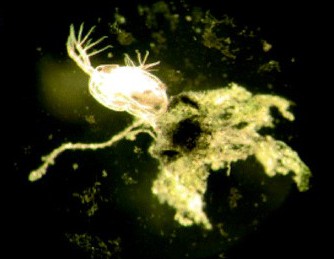This post is the first in what we hope will be an ongoing series of public-friendly summaries describing research articles that have been published by members of the Center for Sustainable Nanotechnology. Jared Bozich, a doctoral student at the University of Wisconsin – Milwaukee, was the first author on this paper and was eager to take on the challenge of boiling it down into a three-paragraph summary. He says, “As the disconnect between science and technology and the public increases with the rapid advancements in these fields, it is important that we make this knowledge accessible. This allows the public to weigh in on scientific breakthroughs and the potential hazards associated with them, so that they may make informed decisions about the products they choose to consume, or have a well-educated voice on issues at public hearings involving propositions on regulations of these technologies.”
The article was published in March 2014 in the journal Environmental Science: Nano.1

“Surface chemistry, charge and ligand type impact the toxicity of gold nanoparticles to Daphnia magna.”1
In this project, we exposed tiny water crustaceans called Daphnia magna to gold nanomaterials (4 billionths of a meter in diameter) that had different chemicals attached to the surfaces. We saw different effects based on the chemicals we attached. Two of the chemicals were positively charged and affected Daphnia mortality and reproduction at really low concentrations. Two other chemicals we attached were negatively charged and had no affect on Daphnia mortality; however, at very high concentrations they did affect Daphnia reproduction and growth.
This research is very important and relevant to nanomaterial design because researchers and manufacturers often place different chemicals on nanomaterial surfaces to perform different tasks and applications. Those materials may end up in the environment, whether through their intended applications or when they are thrown away as waste. Therefore this research will help us develop sustainable implementation of nanotechnologies because it can help people make more informed choices about the possible environmental effects of different nanomaterials that they use for various purposes.
This research was performed as part of a multi-university collaboration to understand the dynamics of developing nanomaterials in a sustainable manner. This research was also done as part of the first chapter in the first author’s PhD thesis.

REFERENCES (article is open access)
Bozich, J. S., Lohse, S. E., Torelli, M. D., Murphy, C. J., Hamers, R. J., & Klaper, R. D. (2014). Surface chemistry, charge and ligand type impact the toxicity of gold nanoparticles to Daphnia magna. Environmental Science: Nano, 1(3), 260-270.
